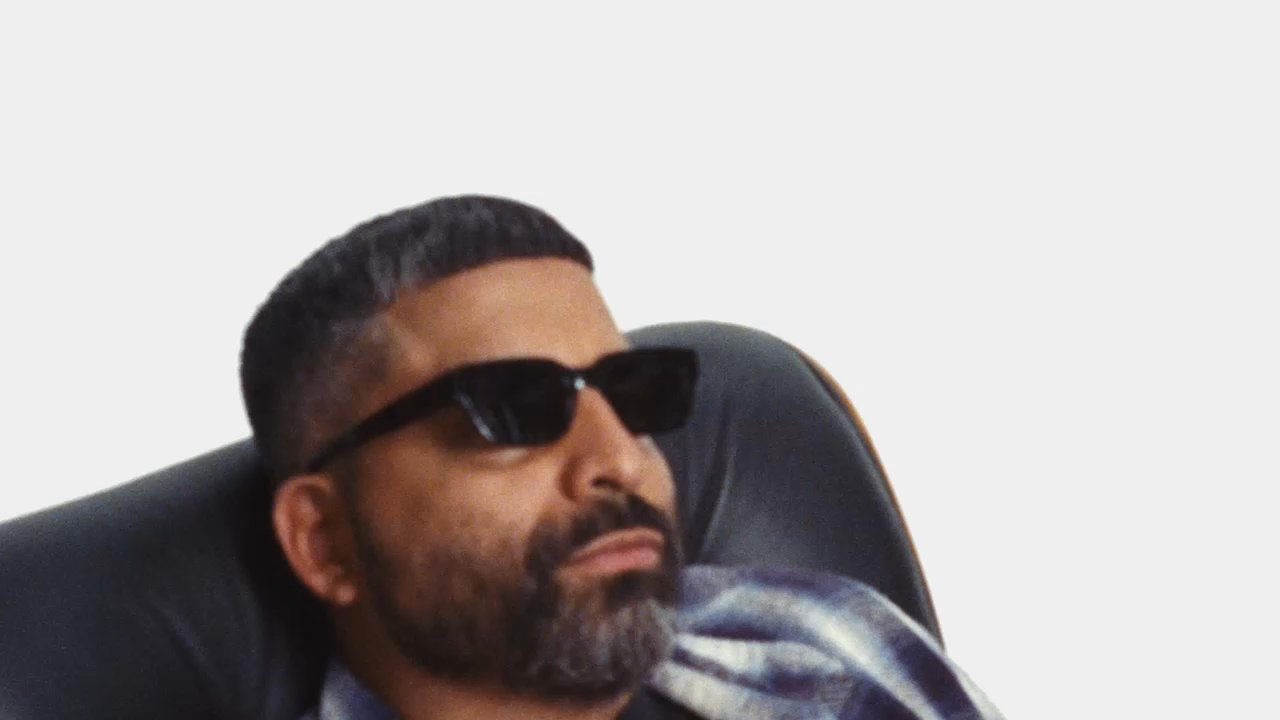
"I remember meeting Zev Love X before he became MF Doom," says Angelo Baque, founder of Awake New York. "I really geeked out because I was a huge KMD fan as a kid. It was just the complete opposite [of the] sound that was happening in the mainstream.
"When "Hey!" came out, my best friend Vaz (who was the manager of the iconic sneaker store Bobbito's Footwork back in the early ’90s) put it on the record player. It has a Scooby Doo sample, so it goes, "Doo do doo, Hey!" We just kept playing it over and over and over. What is this? Nothing sounded like that."
We're talking to Baque in NYC, his stomping ground, along with fellow New Yorker, Bed on Water's Shanel Campbell, and we're getting nerdy. Specifically, we're here to talk music, about how beats give a city, and a brand, a pulse. The conversation is part of a string of celebrations for Marshall's 60th birthday — six decades of creating electrifying audio gear for musicians looking to make something different, something fresh, something outside the box.
"There were so many [music venues] at that time ... where for $5 you could see the next, biggest, greatest hip hop act coming up. Everybody had some kind of open mic night back then. To see Mos Def, Erykah Badu, Talib Kweli at an open mic, it was nothing. You know what I mean?"
"A music venue that had a huge impact on me," Campbell adds, "was definitely Terminal 5. I saw Frank Ocean play there. That was one of my first concerts in the city that was major. As you know, he's not touring as much now. I didn't know that it was going to be so rare to see him and I was near the front and everything. The shit changed my life."
While the Marshall brand may be mostly affiliated with rock n roll — its history is deeply rooted in the genre, linked to giants such as Hendrix and Iggy Pop — it's more synonymous with a mindset. Finding your own way, doing things on your own terms, is exactly the mindset with which Baque describes discovering NYC as a kid.
"I started leaving my house [in Queens] at 12. I would tell my mother that I'm going to the movies with my best friend. Instead, I would hop the train and go straight downtown. I didn't want to stay on my block. The act of getting on the train and going through the worst neighborhoods in Brooklyn to get to downtown gave me the courage to do all the things that I was able to do. You couldn't be a punk and get on the train back then. I had to grow up quick if I wanted to be a part of the city and learn how to go with the flow and do it all on a budget. [Navigating New York] taught me how to be creative. That confidence transcended into all aspects of my career."
It's a sentiment that Campbell echoes. "The city plays a huge part in constructing my creative identity," she says, describing how her day-to-day interactions with space bleed into her designs. "Taking the train every day when I was in high school from the Bronx to Manhattan — the chrome accents, all the ads, and everyone's style — it all had a huge impact on my subconscious. Walking through the city, you see construction symbols on the sidewalk ... graffiti and posters that have been taken down and re-pasted ... it all plays a big part in the stuff that I'm working on now."
Baque also gravitated towards graffiti and through that culture, he says, so many doors opened. "There isn't an archetype graffiti writer that only listens to certain kinds of music or only hangs out in certain kinds of places. Through that community, I was able to really get myself into the underground hip hop scene, poetry scene, punk scene, hardcore scene, and have the flexibility to jump between circles and just have a good time with that."
This rejection of borders and the expectations that come with them is fundamental to Campbell's practice, too. "I think sounds that connect with my brand would be anything chopped and screwed, anything that feels distorted and super DIY. Anything that's too clean and has a certain formula, I tend to stay away from when I'm working because I want it to be something that really gets me thinking, 'How did they do this?' instead.
"When I'm working," she continues. "I find that repetition helps me keep in a certain flow and helps me stay focused. I'll have one playlist that I put together of my favorite songs and listen to the same thing over and over again. I try to find music that feels very trippy and alternative because it helps me slow my brain down and gets me in this pocket where I'm making weird shit."
Campbell lists artists like Amber London, Sun Araw, Kia, and Aphex Twin as particular inspirations for getting her flowing. For Baque, Awake's foundation "will always be in hip hop. Awake New York is always entrenched in youth culture, but I don't think it has to be contemporary culture. I think it's whatever youth culture helped develop, whatever sound and genre at that time and moment."
Moreover, "New York City will always be the beat for the work that I produce. I always gravitate towards the bass — it's the backbone of all my favorite music. I think a lot of people focus on guitar riffs, but for me, the real beauty and sound is the bass. For me, New York City is the bass to Awake and all the stuff that I'm able to create."
Find out more about how Marshall is celebrating 60 Years of Loud here.